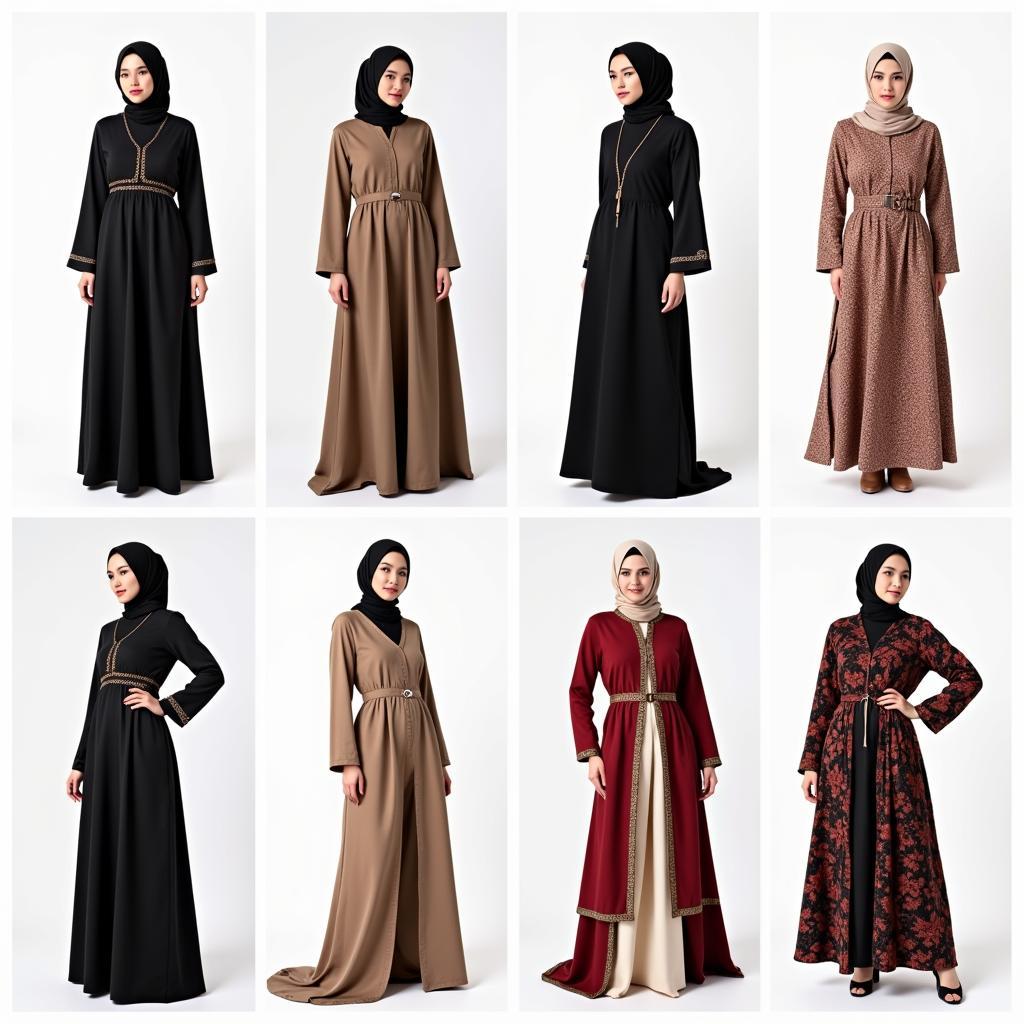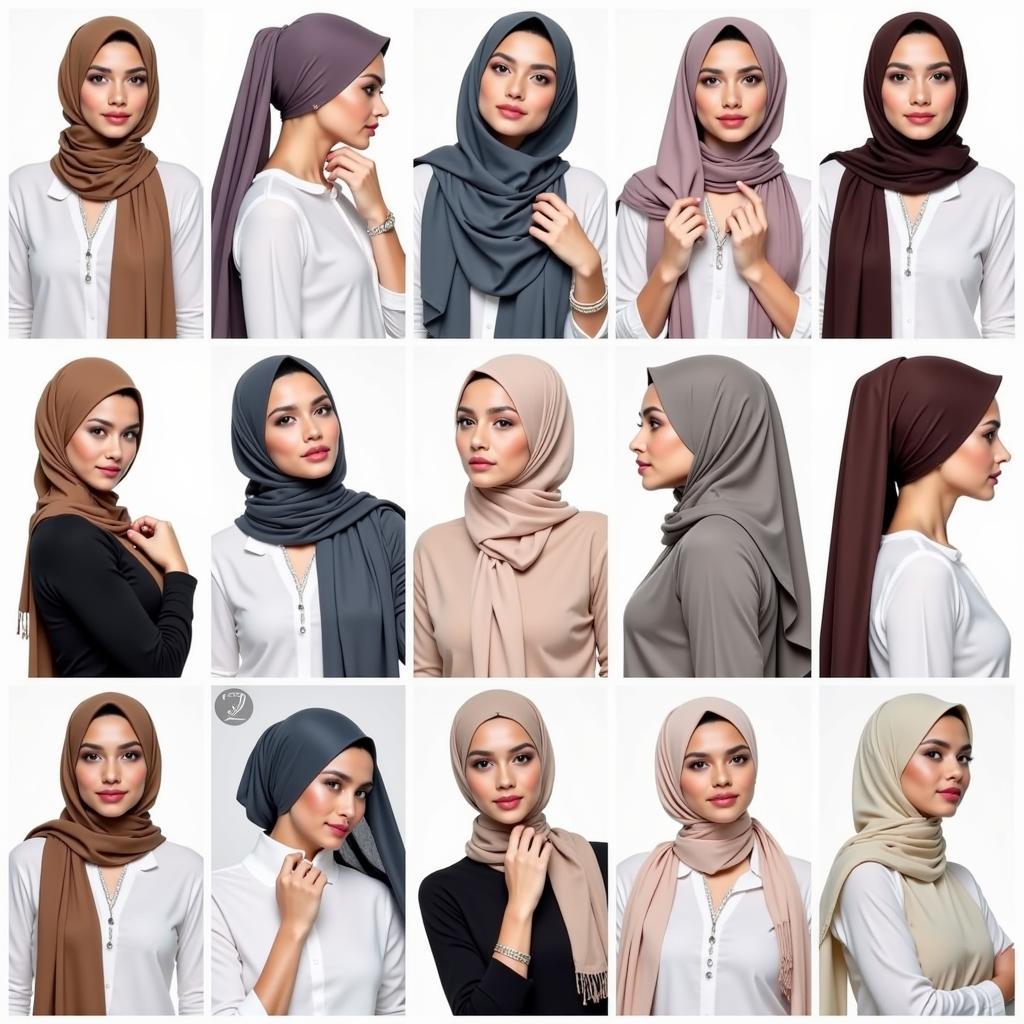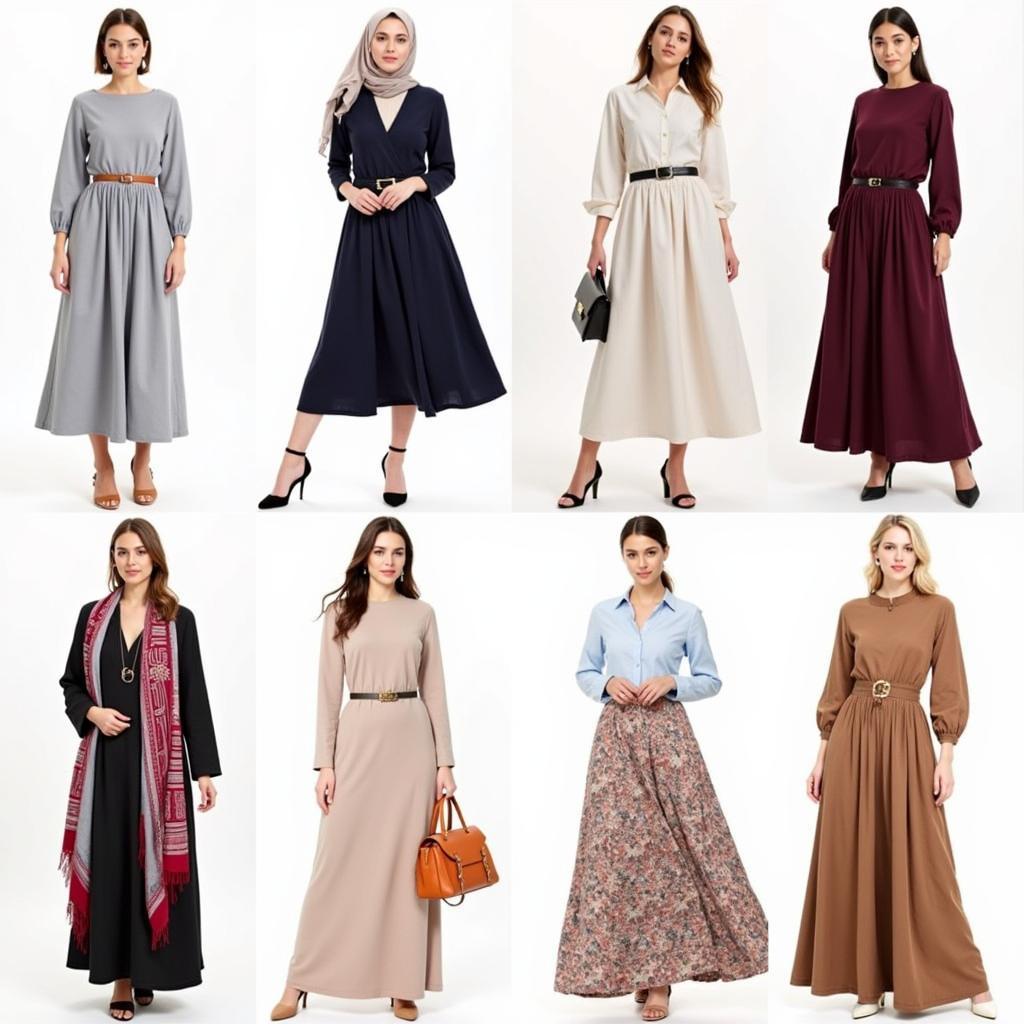Islamic Ladies Dress encompasses a wide range of styles that adhere to the principles of modesty and religious observance in Islam. While interpretations of these principles may vary across cultures and personal preferences, the fundamental aim is to cover the body in a way that is loose-fitting, non-revealing, and reflects simplicity and elegance. This guide explores the diverse world of Islamic ladies dress, providing insights into its cultural significance, fashion trends, and practical tips for creating stylish and modest outfits.
 Various Styles of Islamic Ladies Dress
Various Styles of Islamic Ladies Dress
Understanding Modesty in Islamic Dress
The concept of modesty in Islam extends beyond clothing to encompass one’s behavior, speech, and overall demeanor. In terms of attire, modesty emphasizes covering the awrah, which refers to the parts of the body that are considered intimate and should be concealed from public view. For women, this typically includes the entire body except for the face and hands.
 Different Hijab Styles and Fabrics
Different Hijab Styles and Fabrics
Exploring Different Types of Islamic Ladies Dress
Abaya
The abaya is a long, loose-fitting robe that originated in the Arabian Peninsula and has become a staple garment in many Muslim-majority countries. Traditionally black, abayas are now available in a wide array of colors, fabrics, and embellishments, reflecting evolving fashion trends and personal styles.
Hijab
The hijab, a headscarf that covers the hair and neck, is an integral part of Islamic ladies dress and holds deep religious significance. Hijab styles vary widely, with different fabrics, colors, and draping techniques, allowing women to express their individuality while adhering to religious principles.
Kaftan
Originating from ancient Mesopotamia, the kaftan is a long tunic-like garment that has been adopted by various cultures throughout history. In Islamic fashion, kaftans are often worn as elegant and comfortable attire for special occasions or everyday wear.
Jilbab
The jilbab is a long, loose-fitting outer garment that covers the entire body, often worn over regular clothing. Unlike the abaya, which is open at the front, the jilbab typically closes at the front, providing more coverage.
Shalwar Kameez
Popular in South Asia, the shalwar kameez consists of loose-fitting trousers (shalwar) paired with a long tunic (kameez). This comfortable and versatile outfit is a common choice for everyday wear in many Muslim communities.
Tips for Creating Stylish and Modest Outfits
Choose Loose-Fitting Garments
Opt for clothing that drapes loosely over the body, avoiding tight or revealing silhouettes.
Experiment with Layers
Layering is a great way to add modesty and style to outfits. Use cardigans, jackets, or long vests to cover up.
Play with Colors and Prints
Don’t be afraid to experiment with different colors and prints to create visually appealing and modest outfits.
Accessorize Thoughtfully
Accessories can enhance an outfit while maintaining modesty. Use scarves, jewelry, or belts to add pops of color or personal touches.
 Accessorizing Modest Outfits
Accessorizing Modest Outfits
Conclusion
Islamic ladies dress is a beautiful blend of faith, culture, and fashion. By embracing the principles of modesty while exploring diverse styles and trends, women can express their individuality and confidence while adhering to their religious beliefs. From traditional garments like abayas and hijabs to contemporary interpretations of modest fashion, the world of Islamic ladies dress continues to evolve, offering endless possibilities for creativity and self-expression.